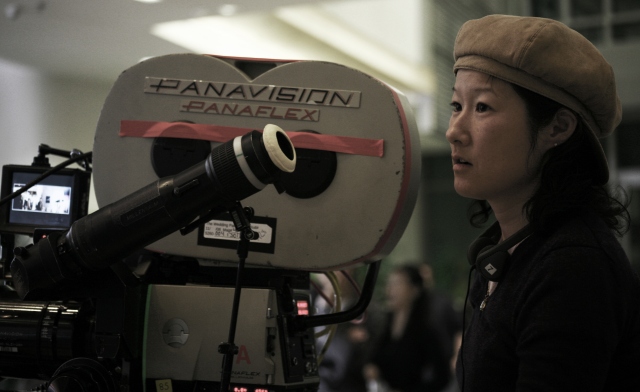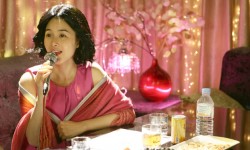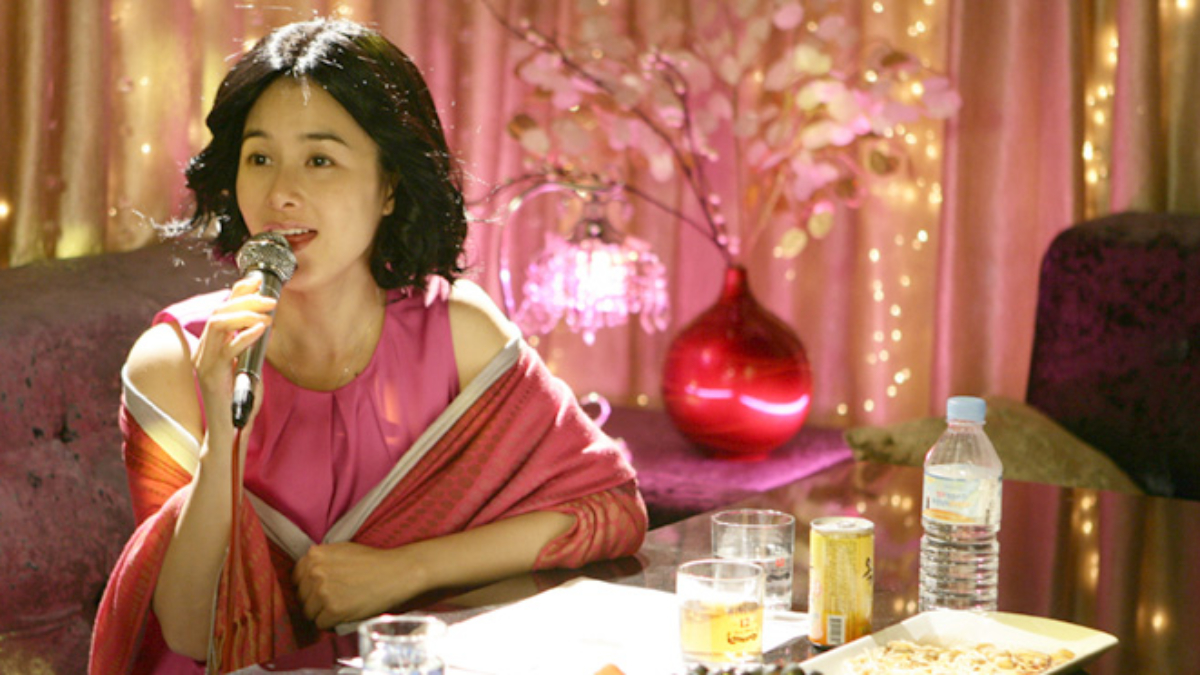
The Korean film industry has gone through a few ups and downs since making its splash on the world cinema radar in the late 90’s through its peak in the early 2000’s. Since then, the industry has suffered some downturns, due to overproduction and some high profile, big-budget box office failures. Exacerbating this situation is the shrinking of the market for overseas sales, and the near-collapse of the DVD market, usually attributed to rampant piracy. One solution film companies have come up with to counteract this situation is to pursue international co-productions, a practice that is rapidly becoming more and more common. Aside from the economic advantages of shared production costs, thus lessening the burden of financing for all parties, these productions also recognize the interconnectedness of the global community, and national borders becoming more porous through advancing digital technology. Korean film studio CJ Entertainment has become one of the most aggressive companies in this regard, having struck deals with a number of international companies, including, in the US, Chris Columbus’ 1492 Pictures. In an interview with The Hollywood Reporter last year, CJ Entertainment’s head of international film financing and production Mike Suh stressed the importance of “universal storytelling” in film resulting from these partnerships. “The most difficult thing [in international co-production] is to develop a crossover content that communicates in both markets while maintaining a localized substance that makes the story unique,” Suh stated in this interview. Striking this balance is an ongoing challenge in creating films that will appeal to diverse audiences.
However, big studios are not the only ones getting into the international co-production game; independent filmmakers have increasingly turned to this method of getting their films made. Although there are definite logistical and cross-cultural challenges, when these productions are successful, not only is there more economic bang for the buck in terms of shared financial sacrifice, there are also the benefits of cultural exchange of ideas and talent that greatly enhance the creative process. One interesting example is Christine Yoo’s debut feature Wedding Palace, the closing night film of the 34th Asian American International Film Festival. Set in Los Angeles’ Koreatown and Seoul, South Korea, Wedding Palace derives much of its humor from the cultural differences between Korean-Americans and Koreans. The film also comments on traditional values and body image, and how these both figure in pressures placed on people to conform to standard and expectation determined by others. Stylistically, Wedding Palace is an eclectic mixture of visual and narrative modes, encompassing animation, music video montages, broad comedy, and romantic moods enhanced by great-looking shots of the Seoul skyline. The behind-the-scenes story of how both the US and South Korea collaborated in the making of Wedding Palace is just as interesting as the film that resulted. Director Yoo generously shared with CineVue her experiences and her thoughts on this collaboration, and how it informed the shooting, casting, and other areas of production.
CineVue: Tell me a little about your background, and how you became interested and got started in filmmaking.
Christine Yoo: I was born in Buffalo, New York and raised in Iowa City, Iowa and Memphis, Tennessee. My parents, like most Korean parents, made it a necessity to learn music. So, I was a competitive piano player growing up. By high school I wanted to do something more than music, so I took up painting and really loved it. But since painting alone in a room, all alone, didn’t suit my very social personality, I decided to channel my love of the arts to the most social art form on the planet – filmmaking. I applied to USC film school, and was overjoyed when I was accepted. After making my first short film, I instantly realized that I had made the right move. I could now combine my knowledge of music and the visual arts with my newly discovered love of working with actors into sort of a fun social art project. I love the collaboration that occurs between various crew departments and talent.
Where did the initial idea for Wedding Palace come from?
To be honest, my family. My Uncle Howard from Hawaii and my dad are two of the funniest guys on earth. My whole life they have always made me laugh. But oddly, the other inspiration stemmed from Koreans’ obsession with plastic surgery and idealized standards of beauty. Speaking as a woman, we always feel there’s something not perfect about how we look, so Na Young, the lead character, allowed me to explore that idea. So the concept of positive self-awareness versus social acceptance is a strong theme woven throughout the film.
Did you conceive of this as a co-production from the start, or did the idea arise later? Michael Kang, who I also contacted for this article, decided to pursue co-production for West 32nd after unsuccessfully shopping it around in Hollywood. How did it work with you?
The narrative was always set in the US and Korea. I first attempted to fund the project in Korea. When that failed, I attempted the studio route. Several people at the studios loved it, but really didn’t know what to do with it. That means “pass” in this business. So it sat collecting dust on a shelf for years. When I picked it back up, I attempted to find money in US, Korea, China and Japan. I eventually attracted money from Korea and the US.
I understand you began writing the film a number of years before making this film. If it wasn’t conceived as a co-production initially, how did your script change, if at all, after it became a co-production?
[Editor and executive producer] Derek Draper and I initially conceived of the idea around 1996. When I was having problems writing the script on my own, Derek suggested that I contact Robert Gardner to possibly co-write. I did contact Robert Gardner in 1999 and we co-wrote the first draft of the script over a 6 week period. At the time I had a terrible case of bronchitis, but despite a hacking cough, I had fun writing the script. In 2001, the script was submitted to a very reputable financing company. They called me back and said they were considering Wedding Palace and a similar script, “but it’s Greek.” The company went with the Greek film, which turned out to be My Big Fat Greek Wedding. At the time they didn’t tell me that the Greek film had Tom Hanks attached to executive produce, so go figure. Well, I guess I should feel honored going toe-to-toe with one of the biggest stars on the planet.How did you settle on Dyne Films, the Korean production company you worked with on this film?
Jonathan H. Kim (Kim Hyoung Joon) is the executive producer of the film and supervised the Korea leg of the production. What’s best is he’s a good old friend and we’re both [USC] Trojans.
You shot in both L.A.’s Koreatown and Seoul for this film. How did this work logistically? Did you shoot in one country and then the other, or did you alternate as needed?
The film was shot over a one year period in three sections. The first leg was in Los Angeles in November 2008. In July and November 2009, I shot the rest of the film in Seoul.
What was the makeup of US and Korean crew? Did you have the same crew members in both countries, or did you make use of local talent in each case?
I shot with two entirely separate crews. In the US I worked with an American union crew. In Korea, I worked with an all Korean crew and the film was organized and shot as a Korean film production. The only person on the crew that was consistent was Kang Hye-jung’s dialog coach, John Song.
What made you decide to cast Kang Hye-jung for the role of Na Young? She’s a great choice, since she brings considerable charm and sweetness to this film.
 Kang was always my first choice for this role. I was a fan of hers from Welcome to Dongmakgol. She has a strong presence and I came to learn first-hand how gifted she is because she does not speak much English in real life. She really dedicated herself. John, the dialog coach, told me she would stay up all night practicing with a dictaphone. By the time we shot the second leg in Korean, her English had improved so much she was even able to improv English lines a bit in certain scenes.
Kang was always my first choice for this role. I was a fan of hers from Welcome to Dongmakgol. She has a strong presence and I came to learn first-hand how gifted she is because she does not speak much English in real life. She really dedicated herself. John, the dialog coach, told me she would stay up all night practicing with a dictaphone. By the time we shot the second leg in Korean, her English had improved so much she was even able to improv English lines a bit in certain scenes.
What made you decide to cast Brian Tee as Jason? He’s very much playing against type here; most audiences know him from his tough guy roles, such as in The Fast and the Furious: Tokyo Drift. What did you see in him that made you feel he’d be right for your film?
When I saw Tokyo Drift, Brian just popped out at me. I felt he had the charisma and gravity to pull off a leading role. When we first met, his bad boy image was actually a point of discussion because the role would require him to be re-styled for a romantic lead. Brian was game. He grew his hair out, and to slim down he ate this green paste – looks worse than space food – for about 6 months! The man has discipline.
I want to ask you about a line of dialog in the film that made me curious. In the scene where Na Young and the cab driver mock the way Jason’s mother controls who he dates, Na Young says, “Korean-Americans are stuck in the 70’s!” The cab driver replies it’s because that’s when they left Korea. I’ve never heard it put quite that way before. And throughout the film, you play up the contrast between Koreans and Korean-Americans. What is your take on that relationship and that connection?
When I go to Korea I’m always shocked at how many changes Seoul has undergone since the last time I was there. New buildings, new neighborhoods, new words, new trends, new train lines. It also gets more cosmopolitan and international. For Korean Americans who have never been to Korea, or Koreans who have immigrated to the US and never returned, it’s probably hard to imagine how much Seoul has evolved into a world class modern city. My hope is that the film can pique people’s interest to learn more about Korea and travel there to experience the excitement that is Korea for themselves.
Were language barriers an issue? Are you fluent in Korean, and if not, what challenges did this present, if any, in communicating with your crew?
I lived a year in Korea when I was really young and also learned the language. With some knowledge of Korean, it wasn’t so bad, because many people spoke English on the set including my D.P. who had studied in London. If there was any real difficulty, it was navigating between the American versus Korean styles of production. Their method of organizing a film crew in some ways is opposite of how organization is done here.
Another language question: I found it interesting that you alternated in English and Korean in both countries. What was your thinking behind this choice, which also reflects the two-country production of the film itself?
I just wanted the language to feel realistic to the situation, to reflect how it would be used in real life. So in the US, primarily English is used but when Na Young is in Korea with her family, Korean is used, etc.
Has the film screened in Korea? Are there plans to do so, and will there be a Korean release?
Our company is planning a US release followed right after by a Korean release.
In the past few years, there have been a number of US/Korea co-productions, films such as West 32nd, Never Forever, American Zombie, as well as bigger budget productions such as The Yellow Sea. How do you feel each country benefits from this method of production?
The making of each film is its own unique experience. In the case of Wedding Palace, each crew had different strengths from which the film could benefit. In the US we shot all the comedy parts. The actors had a great time improvising. The crew was nimble too. Whereas in Korea, the style was measured and planned which suited all the animation and CG work we had to accomplish. I liked the duality of working between two systems which offered more bang for the buck based on which country best suited the production’s material or talent needs.
Do you see any connection between this trend of US/Korea co-production and the longer practice of US remakes of Korean films, the latest announced being Spike Lee’s upcoming version of Oldboy?
Hollywood has done quite a few remakes of Asian films for the last decade. I imagine it will continue too. I think, naturally, the remake trend has made Hollywood and Korean film companies aware of each other, which has led to some co-investments over the years. I just hope it continues so that more hard-working and hopefully talented filmmakers can benefit.
What are your future projects? Do you plan to pursue further co-productions with Korea (or other countries), or are you going another route with the next film?
I’m definitely going to continue shooting US-Korea/Asia co-productions. I have several scripts sitting on my desk right now. So far one of them is really good, two need a lot of work, and there are five I haven’t read. I never thought I’d ever need a reader. On the flight to New York I plan on reading two of them. You always pray what you read will knock you off your feet.
Contributed by Christopher Bourne. Chris is a writer and cinephile. His film reviews and articles have appeared in Senses of Cinema, Meniscus Magazine, The Brooklyn Rail and other publication. He blogs on film at The Bourne Cinema Conspiracy. Follow him on twitter @bournecinema

